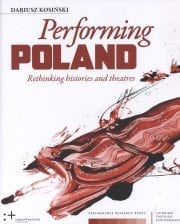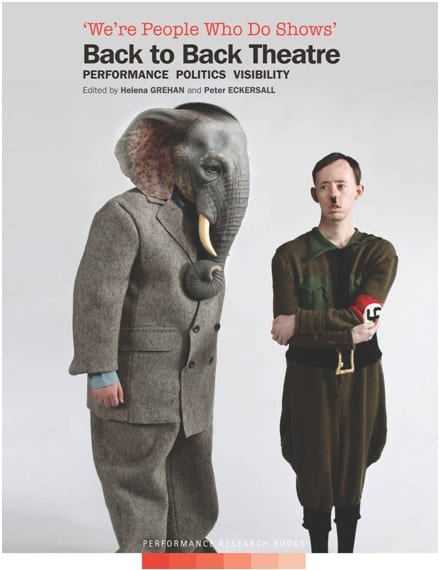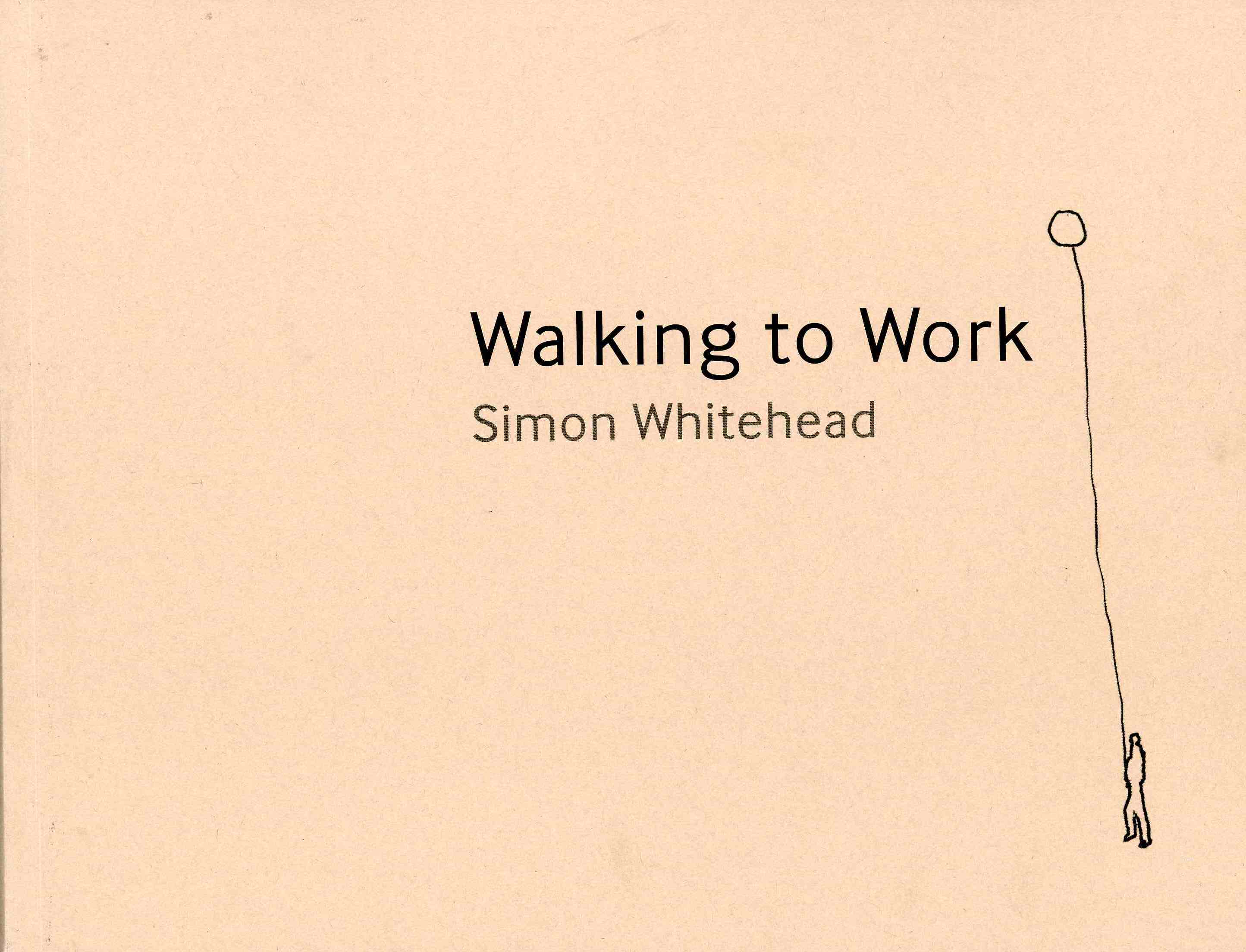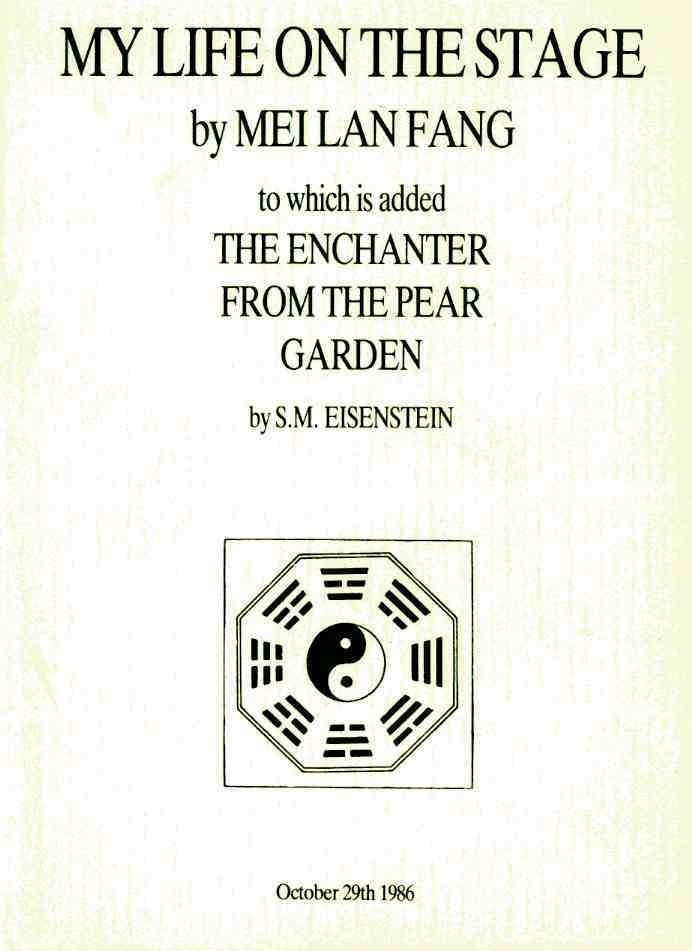Description
A Lexicon of the Central-Eastern European Interwar Theatre Avant-garde presents different aspects of the theatre avant-garde programmes, projects and achievements that took place between the two World Wars in a region of Europe that, squeezed between the two mighty powers of Germany and Russia, experienced similar historical dangers of marginalization and (in many cases literal) colonization and conquest.
The book uses the idea of a lexicon in an unexpected way: Instead of a dictionary of terms, phenomena, names, events, works, etc., creating a historical entity introduced by a title and organized in alphabetical order, the international team of researchers and editors have used the idea of lexicon as a tool to establish something that has not previously been clearly recognized as being separate, specific or autonomous, to constitute a specific historical phenomenon. Thus the lexicon is not a dictionary – it is a performance.
The Lexicon aims to present and establish the phenomenon of the Central-Eastern European interwar theatre avant-garde. This does not mean it creates something that did not previously exist. Rather it (re-) establishes a certain set of elements in such a way that they emerge from an array of different, multi-layered and complicated webs of relations, events, works, projects and circumstances. But they are emerging not as one unit, a single phenomenon, but as a multiplicity invited to act, to perform on the stage that has been designed for them. And this is something quite different from the traditional academic definition, in which one seeks borders and criteria of differentiation and division. In contrast, while performing a phenomenon the book invites different elements to appear on a stage and play with each other like actors to create a series of changing relations.
Being a performance on performance art, the Lexicon follows a special dramaturgical composition, created intentionally to play with drama and theatre conventions. The main body of the book consists of three sections (or acts). The first presents the stages of the Central-Eastern European interwar theatre avant-garde, i.e. the historical and cultural conditions that created an environment in which the avant-garde theatre of the region was developed. Here one can also find short presentations of the main characters — the national theatre avant-gardes that we invited to perform the phenomenon of the Central-Eastern European interwar theatre avant-garde.
The second section of the Lexicon may be seen as an antithesis of the first. What is described in it are not the separate national stages created by specific political and historical conditions, but modern networks of communication working across political borders and cultural differences: magazines, exhibitions, the international working-class movement and Jewish theatre as a special transnational phenomenon.
The third section proposes a synthesis of the whole performance of the Lexicon. It is here that the Central-Eastern European interwar theatre avant-garde appears and acts as an entity enlivened by common aesthetics, values, ideas, modes of work, passions and goals. This part is organized around four general terms: form, drama, dance and event, which hopefully allow description of the specific aspects of the Central-Eastern European interwar theatre avant-garde seen as an autonomous subject with its own agency.
The book is composed of texts written by different authors from different cultures and styles of writing. Its editors tried not to hide this multiplicity by forcing an ‘objective’ unification – quite the opposite. To help the reader to navigate between these different voices and perspectives the editors have created a special Index, listing the main figures, events, performances and ideas of the Central-Eastern European interwar theatre avant-garde.
A Lexicon of the Central-Eastern European Interwar Theatre Avant-garde is the result of long-term project realized from 2014 under the auspices of the Raszewski Theatre Institute and, in its final phase (2018–24), financed by the Polish Minister of Education and Science in the frame of Narodowy Program Rozwoju Humanistyki (National Programme for the Development of Humanities), project no.: 11H 17 0144 85.
This lexicon does very welcome and much needed work filling gaps for English-speaking readers by building a complex picture of previously invisible activities: charting avant-garde theatre practices between the wars across Central-Eastern Europe. Beautifully illustrated and comprehensive, it depicts a wealth of activities, helping us understand later experimentation by revealing its foundations. It also presents an extraordinary network and flow of influences and practices as people and ideas circulated across the breadth of Europe. With the current political shifts and resurgence of nationalism across the region (in addition to the war in Ukraine), this book is important for reminding us of shared values and interests and common artistic legacies. The multiple authors and the editor are to be congratulated for their hard work and many insights. The Lexicon is indispensable reading to fully understand the development of theatre throughout Europe.
Paul Allain
Professor of Theatre and Performance,
University of Kent, Canterbury, UK
A Lexicon of the Central-Eastern European Interwar Theatre Avant-garde, edited by Dariusz Kosiński, is the result of a long-term collaboration between theatre and performing arts scholars from a number of Central and Eastern European countries, the outcome of meetings and discussions undertaken on various occasions since 2012. In the introduction, the editors propose that this work is not a typical lexicon but rather a performance. In doing so, they emphasize, among other things, their deep conviction that the avant-garde was performative in nature. Hence it is difficult to capture its specificity other than through performative acts of establishing network connections between artistic phenomena and the people who created them, and the places that these people transformed with their actions. The declaration that the Lexicon is meant to be a performance also conveys the task set by the authors of the texts. This allows the artists and their practices recalled in the Lexicon to enter into new and unexpected relationships; and the task they set for the readers is to find their own place and their own perspective on the simultaneous scene of Central-Eastern European theatre avant-gardes. All this is done while taking care not to get too accustomed to this perspective, but to change it in order to see the dynamic performance from multiple positions.
Ewa Partyga
Associate Professor in the Theatre History and Theory Department,
Institute of Art, Polish Academy of Sciences
LIST OF CONTENTS
General Introduction: This is not a lexicon. Dariusz Kosiński – 11
Section One
STAGES: AVANT-GARDE THEATRE AND THE STATE BETWEEN THE WORLD WARS
1.0 Avant-garde Theatre and the State between the World Wars: Introduction. Zoltán Imre and Dariusz Kosiński – 25
1.1 The Theatre Avant-garde and the Czechoslovak Republic. Martin Bernátek – 29
1.2 In the Shadow of a Monument: The Second Polish Republic and the first Polish theatre avant-garde. Dariusz Kosiński – 43
1.3 The Avant-garde and Independence: The case of Romania. Anca Hațiegan – 53
1.4 Avant-garde Theatre in Bulgaria: Transforming collective identifications in the 1920s and 1930s. Kamelia Nikolova – 63
1.5 The Latvian Theatre Avant-garde: From the celebration of the 1st of May to The Song of Rebirth. Edīte Tišheizere. Translated by Kristina Guste – 69
1.6 Two Attempts to Establish the Avant-garde in Lithuanian Theatre. Martynas Petrikas and Asta Petrikienė – 81
1.7 The Peacock’s Tail. Georgian avant-garde performance 1912–36. Ketevan S. Kintsurashvili – 91
1.8 Avant-garde Theatre and the Independent State: The case of Ukraine. Hanna Veselovska – 97
1.9 In Marginality. Hungarian avant-garde experiments and the nation-state (1920–40). Zoltán Imre – 107
1.10 A New Story with Old Elements: The social and cultural context of the emerging avant-garde in Serbia/Kingdom of Yugoslavia between the World Wars. Marina Milivojević Mađarev and Milan Mađarev – 117
1.11 Croatia: The new theatre for a new human being. Boris Senker – 123
1.12 Avant-garde on the Border. The case of Trieste/Trst/Triest. Tomaž Toporišič – 131
1.13 Lviv: Erasure of tradition in a city of tradition. Małgorzata Dziewulska. Translated by Mikołaj Kosiński – 143
1.14 Vitebsk as a ‘Third Space’ of the Avant-garde in Belarus. Tania Arcimovich – 153
Section Two
NETWORKS: THE CENTRAL-EASTERN EUROPEAN INTERWAR AVANT-GARDE IN INTERNATIONAL AND TRANSNATIONAL CONTEXTS
2.0 Beyond Borders: Mobility and sites of exchange among interwar avant-garde theatres in Central-Eastern Europe. Introduction. Martin Bernátek, Zoltán Imre and Przemysław Strożek – 165
MOBILITY AND MIGRATIONS IN INTERWAR AVANT-GARDE THEATRES IN CENTRAL-EASTERN EUROPE
2.1.0 Introductory Remarks. Martin Bernátek, Zoltán Imre and Przemysław Strożek – 177
2.1.1 Mobility of Belarusian Artists in the Soviet Union: Lev Litvinov ‘on the edges’ of the revolutionary theatre. Tania Arcimovich – 179
2.1.2. Migrations to and from Latvia. Edīte Tišheizere. Translated by Kristina Guste – 185
2.1.3 Migrations to and from Georgia. Ketevan S. Kintsurashvili – 189
2.1.4 Migrations to and from Ukraine. Hanna Veselovska – 193
2.1.5 Russian Emigrants in Serbia, 1918–41. Milan Mađarev and Marina Milivojević Mađarev – 197
2.1.6 Migrant Artists and Political Activists of the Slovene Avant-garde. Tomaž Toporišič – 205
2.1.7 Migrations to and from Romania. Alexandra Chiriac – 209
2.1.8 Migrations to and from Poland. Przemysław Strożek with Dariusz Kosiński and Justyna Michalik-Tomala – 215
2.1.9 Avant-garde Theatre in Motion around, in and out of Czechoslovakia. Martin Bernátek – 221
2.1.10 Mobility of Artists to and from Bulgaria. Kamelia Nikolova – 229
2.1.11 Migrations to and from Hungary. Zoltán Imre – 237
TRANSNATIONAL CIRCULATION OF IDEAS ON AVANT-GARDE THEATRE IN THE NETWORKED MAGAZINES OF CENTRAL-EASTERN EUROPE
2.2.0 Introductory Remarks. Martin Bernátek, Zoltán Imre and Przemysław Strożek – 243
2.2.1 Czechoslovak Magazines: Host, Pásmo, Fronta, ReD, Index, Rozpravy Aventina, Program D. Martin Bernátek – 245
2.2.2 Polish Magazines: Zdrój, Zwrotnica, Blok, Dźwignia, Praesens, Linia. Przemysław Strożek – 253
2.2.3 Ukrainian Magazines: Semafor u maibutnie, Nova Generatsia, Mystetski materialy avangardu. Hanna Veselovska – 259
2.2.4 Georgian Magazines: H2SO4. Ketevan S. Kintsurashvili – 267
2.2.5 Romanian Magazines: Contimporanul, Integral, 75 HP, Punct, unu, Periszkóp. Alexandra Chiriac – 271
2.2.6 Hungarian Magazines: A TETT, MA, Új Föld, Színház és Film, Független Színpad. Zoltan Imre – 279
2.2.7 Bulgarian Magazines: Vezni, Crescendo, Plamuk. Kamelia Nikolova – 287
2.2.8 Croatian Magazines: Scena, Teater, Comoedia, Kritika, Književnik, Plamen, Zenit. Višnja Kačić Rogošić – 291
2.2.9 Serbian Magazines: Svetokret, Zenit, Večnost, Út, Comoedia, Pozorište. Milan Mađarev and Marina Milivojević Mađarev – 301
2.2.10 Slovenian Magazines: Novi oder, Tank. Tomaž Toporišič – 307
2.2.11 Lithuanian Magazines: Keturi vėjai, MUBA. Martynas Petrikas and Asta Petrikienė – 313
2.2.12 Latvian Magazines: Laikmets. Edīte Tišheizere. Translated by Kristina Guste – 317
THE PRESENCE OF THE CENTRAL-EASTERN EUROPEAN INTERWAR AVANT-GARDE AT INTERNATIONAL THEATRE EVENTS
2.3.0 Introductory Remarks. Martin Bernátek, Zoltán Imre and Przemysław Strożek – 323
2.3.1 1922. Amsterdam. The International Theatre Exhibition. Written collectively – 325
2.3.2 1924. Vienna. International Exhibition of New Theatre Technology. Written collectively – 331
2.3.3 1925. Paris. International Exhibition of Modern Decorative and Industrial Arts. Written collectively – 333
2.3.4 1926. New York. International Theatre Exhibition. Written collectively – 337
2.3.5 1927. Magdeburg. The German Theatre Exhibition. Written collectively – 341
2.3.6 1929. Barcelona International Exhibition. Written collectively – 343
2.3.7 1930. Moscow. Theatre Olympiad. Written collectively – 345
2.3.8 1933. Moscow. International Olympiad of Revolutionary Theatres. Written collectively – 347
2.3.9 1934. New York. International Exhibition of Theatre Art. Written collectively – 349
2.3.10 1936. Milan. Sixth Triennale ‘Continuity–Modernity’. Written collectively – 351
2.3.11 1936. Vienna. The International Exposition of Theatre Art. Written collectively – 353
2.3.12 1937. Prague. The International Conference of Avant-garde Theatremakers. Written collectively – 355
2.3.13 1937. Paris. The International Exposition of Arts and Technology in Modern Life. Written collectively – 365
2.3.14 1930s. International Dance Competitions. Written collectively – 367
2.3.15 References – 370
CENTRAL-EASTERN EUROPEAN INTERWAR WORKERS’ THEATRE: WORKERS’ CULTURE, THE TRANSNATIONAL PROLETARIAN MOVEMENT AND THE AVANT-GARDE
2.4.0 Introductory Remarks. Martin Bernátek, Zoltán Imre and Przemysław Strożek – 379
2.4.1 United Workers of Leftist Theatre in Czechoslovakia. Martin Bernátek – 381
2.4.2 Hungarian Workers’ Theatre, the Avant-garde and the Transnational Proletarian Movement. Zoltán Imre – 389
2.4.3 Workers’ Theatres in Ukraine. Hanna Veselovska – 401
2.4.4 The Workers’ Stage in Poland in the Context of Avant-garde Theatre. Przemysław Strożek – 407
2.4.5 Workers’ Theatre in Romania. Anca Hațiegan – 413
2.4.6 The Ljubljana Workers’ Stage and the Transnational Proletarian Movement. Tomaž Toporišič – 417
2.4.7 Anna Lācis: A Latvian transit from Russia to Western Europe. Edīte Tišheizere. Translated by Kristina Guste – 421
2.4.8 The Workers’ Theatres in Georgia. Ketevan S. Kintsurashvili – 431
JEWISH THEATRES AND THE AVANT-GARDE IN CENTRAL-EASTERN EUROPE
2.5.0 Introductory Remarks. Martin Bernátek, Zoltán Imre and Przemysław Strożek – 437
2.5.1 Avant-garde Jewish Theatres in Ukraine: Kyiv, Kharkiv. Hanna Veselovska – 439
2.5.2 Avant-garde Jewish Theatres in Belarus: Minsk. Tania Arcimovich – 443
2.5.3 Avant-garde Jewish Theatres in Poland: Vilnius, Łódź, Warsaw. Małgorzata Leyko. Translated by Magdalena Solak-Michałkiewicz – 447
2.5.4 Avant-garde Jewish Theatres in Lithuania: Kaunas. Martynas Petrikas and Asta Petrikienė – 451
2.5.5 Avant-garde Jewish Theatres in Romania: Bucharest. Alexandra Chiriac – 459
2.5.6 The Tours of the Vilna Troupe. Alexandra Chiriac – 463
Section Three
PERFORMANCES: CRUCIAL AESTHETIC ASPECTS OF THE CENTRAL-EASTERN EUROPEAN INTERWAR THEATRE AVANT-GARDE
3.0 In Between: The aesthetics of the Central-Eastern European interwar theatre avant-garde. Justyna Michalik-Tomala and Marina Milivojević Mađarev – 469
FORM
3.1.1 ‘A carnival of eclecticism’: Form as synthesis in avant-garde performance. Alexandra Chiriac – 475
3.1.2 Croatian Thinkers in the 1920s and the 1930s on Formal Aspects of Theatre. Višnja Kačić Rogošić – 481
3.1.3 Form in Latvian Avant-garde Theatre. Edīte Tišheizere. Translated by Kristina Guste – 493
3.1.4 The Founders of New Forms in Georgian Theatre. Ketevan S. Kintsurashvili – 501
3.1.5 New Forms of Theatre Space. Justyna Michalik-Tomala. Translated by Magdalena Solak-Michałkiewicz – 507
3.1.6 Beyond the Power of the Known. Form as a vehicle in the theories of the Polish theatre avant-garde. Dariusz Kosiński – 513
3.1.7 Thinking Practice, Shaping Art. Aesthetics of the interwar theatre avant-garde in Czechoslovakia. Martin Bernátek – 523
DRAMA
3.2.1 Doing Things with Words, or What the Avant-garde Needs Drama For. Ewa Guderian-Czaplińska. Translated by Magdalena Solak-Michałkiewicz – 531
3.2.2 Reflections on sintesi: From drama and theatre to visual poetry, film and radio. Przemysław Strożek – 539
3.2.3 Serbian Avant-garde Drama. Marina Milivojević Mađarev – 545
3.2.4 Expressionist Features of Croatian Drama of the 1920s. Boris Senker – 555
3.2.5 The Model of Slavko Grum’s New Drama and the Influence of Tairov. Tomaž Toporišič – 561
3.2.6 The Theatrical Avant-garde and Drama: The case of Romania. Anca Hațiegan – 567
3.2.7 Drama and its Staging in the Czechoslovakian Avant-garde. Martin Bernátek – 573
DANCE
3.3.1 The Choreography of Innovation: Avant-garde ballet on Ukraine’s stage in the 1920s. Hanna Veselovska – 579
3.3.2 Stage Movement in Avant-garde Theatre in Serbia 1918–41. Milan Mađarev – 591
3.3.3 Avant-garde Dance in Poland. Małgorzata Leyko. Translated by Magdalena Solak-Michałkiewicz – 595
3.3.4 The Hungarian Avant-garde, Women, and Dance/movement. Zoltán Imre – 603
EVENT
3.4.1 Performance on the Page. Martynas Petrikas and Asta Petrikienė – 613
3.4.2 The Theatrical Avant-garde and Events. The case of Romania. Anca Hațiegan – 623
3.4.3 Never Again. The Polish interwar theatre avant-garde and the art of performative events. Dariusz Kosiński – 629
3.4.4 The Spectator in Polish Interwar Avant-garde Theatre. Justyna Michalik-Tomala. Translated by Magdalena Solak-Michałkiewicz – 635
3.4.5 Cricot: The magic box of subversion. Małgorzata Dziewulska. Translated by Magdalena Solak-Michałkiewicz 641
Section Four
4.0 LEXICON INDEX – 651





